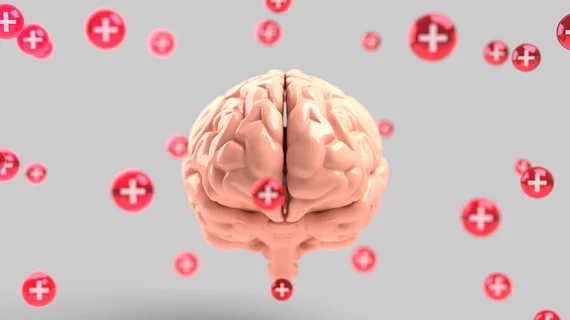Brains are getting bigger—and risk of dementia could be declining
New research found that human brains are getting larger, both in terms of volume and surface area, and it may align with data showing dementia diagnoses are declining.
The study from UC Davis Health measured the human brain over generations, finding a 6.6% increase in brain volume and nearly 15% expansion of overall brain size. That increase is seen when comparing the brains of people born in the 1930s with those from the 1970s. The full findings are published in JAMA Neurology. [1]
For their analysis, researchers relied on 75-years of data from the Framingham Heart Study (FHS), which began in 1948, starting with 5,209 men and women between the ages of 30 and 62. The study participants now span three generations.
MR images from the study cohort, conducted between 1999 and 2019, were reviewed by UC Davis Health researchers, consisting of 3,226 people (53% female, average age of 57) born from 1930 to 1970. The team led by Charles DeCarli, MD, from UC Davis Alzheimer’s Disease Research Center, found there was a gradual but consistent increase in brain structures over time.
Specifically, participants born in the 1930s had an average volume of 1,234 ml, but for those born in the 1970s, the volume was 1,321 ml—a relative increase of 6.6% over four decades. Similarly, average brain surface area from 1930 to 1970 increased from 2,056 sq cm to 2,104 sq cm, or roughly 15%. The amount of white matter in the brain also rose over time.
DeCarli and his colleagues hypothesize this increase may improve overall brain health and function, especially as people age—and dementia rates seem to correlate with that assumption. Although numbers from the Alzheimer’s Association show 7 million Americans currently have dementia, the percentage of the population is decreasing, falling 20 percent since the 1970s, according to an earlier study that also leveraged FHS data.
However, other factors may be in play, as the participants in the FHS study are predominantly non-Hispanic white and do not accurately represent the demographics of the general public.
“The decade someone is born appears to impact brain size and potentially long-term brain health,” DeCarli said in a statement. “Genetics plays a major role in determining brain size, but our findings indicate external influences—such as health, social, cultural and educational factors—may also play a role.”
More research is necessary to accommodate socio-economic factors and patient medical history before any firm conclusions can be made regarding changes in brain size and its impact on dementia rates.
The full study is available at the link below.

